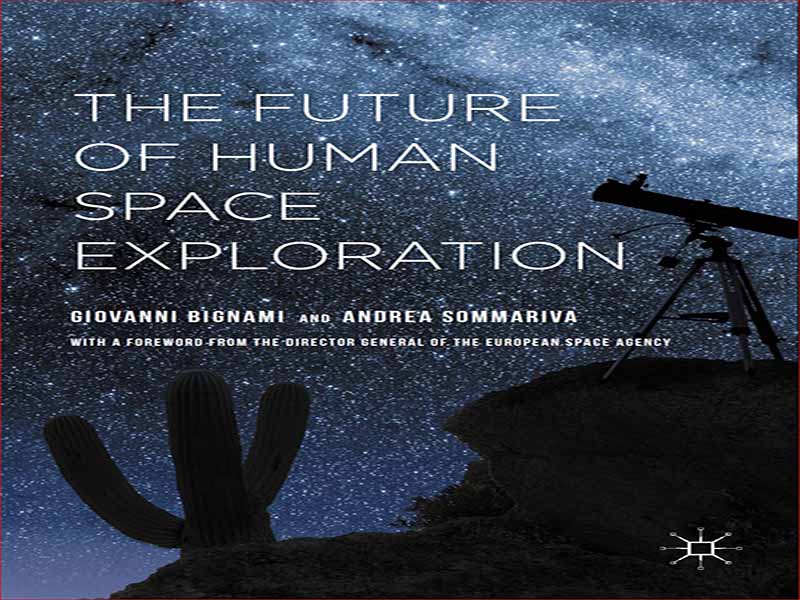- عنوان کتاب: The Future of Human Space Exploration
- نویسنده/انتشارات: Giovanni Bignami
- حوزه: فضانوردی
- سال انتشار: 2016
- تعداد صفحه: 216
- زبان اصلی: انگلیسی
- نوع فایل: pdf
- حجم فایل: 3.72 مگابایت
در کتاب آینده اکتشاف فضای انسانی، جیووانی بیگنامی و آندریا سوماریوا بحثی را درباره موضوعی بسیار چالش برانگیز ارائه میکنند: موضوع اکتشاف. برای جامعه فضایی، اکتشاف در هسته اصلی فعالیت فضایی قرار دارد و فناوری و علم را در بالاترین سطح گرد هم می آورد. اکتشاف، چه رباتیک و چه انسانی، مستلزم این است که در مورد اثرات احتمالی که بسیار فراتر از تجربه روزمره ما هستند فکر کنیم. این کتاب بر تمام جنبههای اکتشاف، از تاریخ، سیستمهای پرتابگر و رانش و فضاپیماها، تا فعالیتهای ممکن فراتر از علم مانند استخراج معادن در جهان، تمرکز دارد. همچنین جنبه های حیاتی پرواز فضایی انسان را پوشش می دهد. بخشهای بزرگی از کتاب به گونهای نوشته شده است که حتی به خواننده کمآگاه نیز درک روشنی از موضوع بدهد. در عین حال، کسانی که قبلاً درک عمیقی دارند می توانند اطلاعات دقیقی در مورد فیزیک بیابند که زمینه این فعالیت ها را فراهم می کند. چالش برانگیزترین بخش اکتشاف نه فناوری است و نه علم. بلکه برای متقاعد کردن سازمان هایی است که پول عمومی را مدیریت می کنند تا در اکتشاف سرمایه گذاری کنند. مشکل این است که اکتشاف به دنبال ناشناخته است و بنابراین نمی تواند به طور جدی بازگشت سرمایه گذاری روی زمین را به طور جدی نوید دهد. با این حال، نمونههایی از گذشته نشان میدهد که همه مأموریتهای اکتشافی، تأثیرات بیشتری فراتر از هدف علمی اولیه خود داشتهاند. به عنوان مثال، این تحقیقات روی زهره بود که اثر گلخانه ای را بر روی زمین فاش کرد (که بیشتر به عنوان “تغییر آب و هوا” شناخته می شود). برای ماموریت روزتا، دوربین ویژه ای ساخته شد که قادر بود بین سایه های مختلف خاکستری روی دنباله دار تفاوت قائل شود. فناوری Th is اکنون برای تشخیص زودهنگام جنگلها با مشاهده جنگلها و نشان دادن بخار دود یا مه استفاده میشود. علاوه بر این، مأموریتهای اکتشافی معمولاً در چارچوبی بینالمللی سازماندهی میشوند که قادر به پل زدن درگیریهای زمینی است. یک نمونه درجه اول از این ایستگاه فضایی بین المللی است که در آن فضانوردان و فضانوردان از ایالات متحده آمریکا، روسیه، کانادا، ژاپن و اروپا همگی با موفقیت با هم کار می کنند. با این حال، از آنجایی که چنین نتایجی اهداف اصلی اکتشاف نیستند، نیاز دائمی به ادامه طرح برای آن وجود دارد.
In Th e Future of Human Space Exploration , Giovanni Bignami and Andrea Sommariva present a discussion of a very challenging topic: that of exploration. For the space community, exploration lies at the very core of space activity and brings together technology and science at the highest level. Exploration, whether robotic or human, requires that we think about possible eff ects that extend far beyond our day-to-day experience. Th e book focuses on all aspects of exploration, ranging from history, launcher and propulsion systems and spacecraft, to possible activities beyond science such as mining in the universe. It also covers the crucial aspects of human spacefl ight. Large parts of the book are written in such a way as to give even the less-informed reader a clear understanding of the subject. At the same time, those already with an in-depth understanding can fi nd detailed information about the physics that provides the background to these activities. Th e most challenging part of exploration is neither the technology nor the science. Rather, it is to convince those organisations that handle public money to invest in exploration. Th e problem is that exploration is looking into the unknown and therefore cannot seriously promise a direct return on investment on Earth. However, examples from the past show that all exploration missions have had additional eff ects beyond their initial scientifi c purpose. For example, it was investigations of Venus that disclosed the greenhouse eff ect on Earth (better known as “climate change”). For the Rosetta mission, a special camera was developed that was able to diff erentiate between diff erent shades of grey on the comet. Th is technology is now used for early forest-fi re detection by observing forests and indicating smoke vapour or fog. In addition, exploration missions are usually organised in an international framework able to bridge earthly confl icts. A fi rst-rate example of this is the International Space Station in which astronauts and cosmonauts from the USA, Russia, Canada, Japan and Europe all work together very successfully. However, as such results are not the main objectives of exploration, there is a constant need to continue making the case for it.
این کتاب را میتوانید از لینک زیر بصورت رایگان دانلود کنید:
Download: The Future of Human Space Exploration




































نظرات کاربران